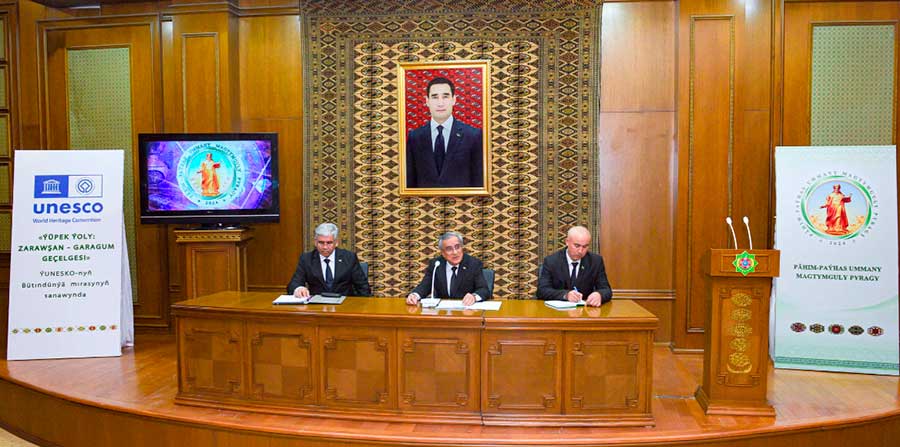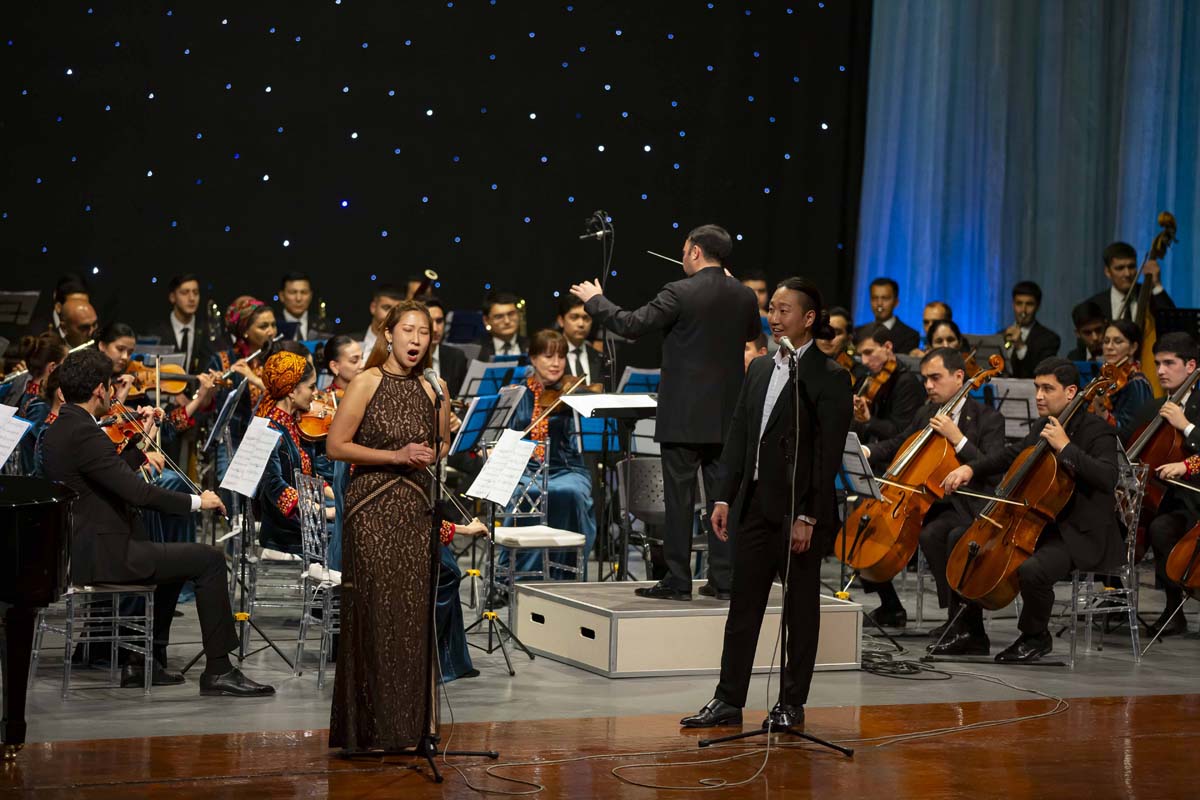Decision on inclusion in the UNESCO World Heritage List object "Great Silk Road: Zarafshan-Karakum corridor", adopted on September 17, 2023 at the expanded 45th session of the UNESCO World Heritage Committee in Riyadh (Kingdom of Saudi Arabia), became a significant event in the field of preservation of historical and cultural heritage.

On the occasion of receiving a UNESCO confirmation certificate, in
the first days of the new year at the State Museum State cultural center of the country took place conference organized by the National Directorate Turkmenistan for the protection, study and restoration of monuments history and culture.

During the meeting, scientific representatives, specialists state historical and cultural reserves, Institute history and archeology of the Academy of Sciences, museum staff, as well as teachers and students of specialized universities discussed the strategic role of Turkmenistan in the development of Zarafshan-Karakum corridor.
Consisting of 31 objects located in the territories of three countries - in Turkmenistan, Uzbekistan and Tajikistan, Zarafshan-Karakum corridor was the main section of the Great еhe Silk Road in Central Asia, connecting everything directions.
In his speech, the head of the National Directorate for protection, study and restoration of historical and cultural monuments Turkmenistan Mukhametdurdy Mamedov noted that it was therefore, seven unique objects. These are the settlements of Amul-gala and Kushmeikhan, rabat Mansaf, caravan sheds Kone-kala, at-Tahmalaj, Akcha-kala and Kyzylcha-kala.
These structures were based on unique technologies, allowing people engaged in trade to carry out long journeys through the desert and overcome difficulties hot climate.
Representatives of Turkmenistan, Uzbekistan and Tajikistan carried out a great deal of joint work to introduce a number of sites on the World Heritage List. The Turkmen part of such a large-scale project was developed with the participation of specialists from the National Directorate Turkmenistan for the protection, study and restoration of monuments history and culture and State historical and cultural reserves "Kerki" and "Ancient Merv".
Unified transnational serial nomination of objects Zarafshan-Karakum corridor in the field of cultural and natural heritage reflects outstanding achievements in the field architecture and technology, monumental art and urban planning on the Silk Road section from the 2nd century BC. By 16th century AD.








